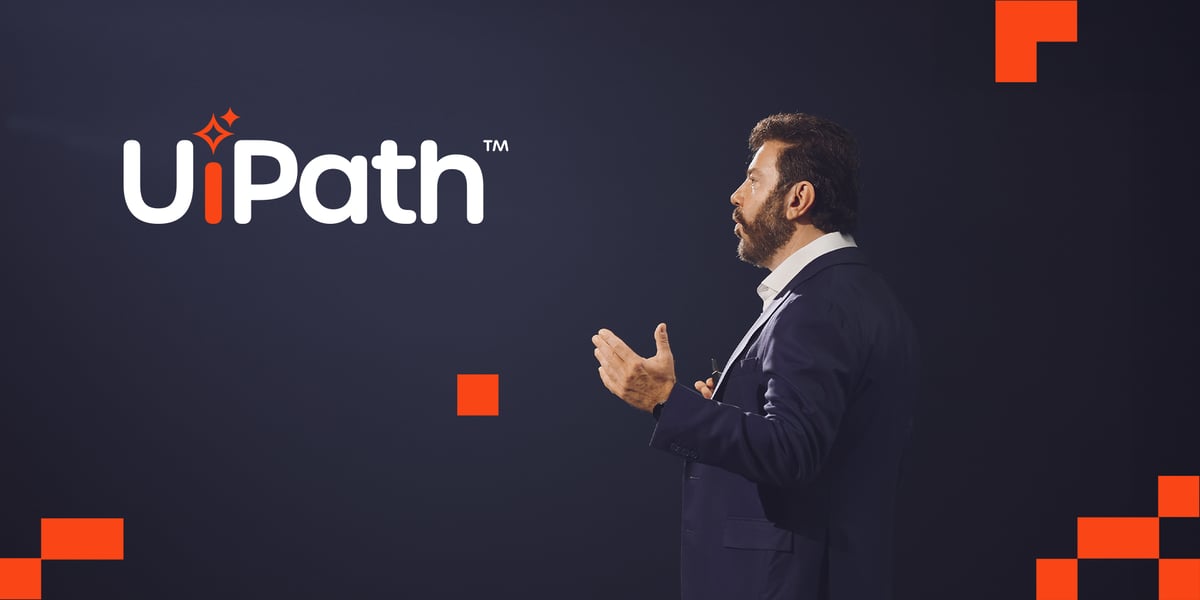The new era of agentic automation begins today

I still remember those early days in Bucharest, 2005. A small team, limited resources, but unwavering dedication to our goal. We believed in something simple yet profound: people deserve to do less boring tasks and more rewarding work.
Back then, automation wasn't what it is today. The landscape was dominated by complex, code-heavy tools that required deep technical expertise. Our vision seemed almost impossibly distant—automation that anyone could use, that could work with any application, that could mimic human actions. A robot for every person.
There's a moment I'll never forget from 2013 when we launched our first major product, UiPath Studio. We were using an open source AI library called OpenCV, which, among other things, provided a feature to find a smaller image within a bigger image. We repurposed that library for automation, enabling clicking on buttons or editing text boxes. Our solution worked by screen recording an entire flow within an application, and during replay, the code would find the image of the button, calculate coordinates, and complete the action.
I was demonstrating this product to some people who were well-versed in one of our first competitors' technologies. To achieve the same automation goal with their proprietary approach would take them two days, and the outcome wouldn't be as reliable. I remember pressing the Run button and within five minutes, the automation was successful—followed by complete silence. They couldn't believe their eyes.
Looking back in time, I realize that the power of that moment came from how well we integrated various pieces of technology into a seamless product that simplified creating automation in a material way and opened up a career path for millions of automation developers.
Nobody thought what we were trying to build was possible. RPA itself seemed like a fantasy. But we weren't chasing hype—we were building technology that actually worked, that solved real problems, all powered by the accessibility and flexibility of open source innovation.
Fast forward to today, and I'm getting goosebumps just thinking about what we're launching: the first enterprise-grade platform for agentic automation. This moment echoes that breakthrough in 2013—where the seamless integration of technology creates something greater than the sum of its parts. Just as we leveraged open technologies then to create a work of beauty and precision, today's agentic automation represents the next evolution: systems that don't just follow instructions but understand context, adapt, and integrate across the entire technological ecosystem to deliver solutions that once seemed impossible.
Emulating humans from doing to thinking
As an engineer at heart, I've always been fascinated by how technology works, not what sounds impressive in a pitch deck. What we built with RPA was remarkable—robots that could reliably replicate human actions.
But what we're launching today goes infinitely deeper, fully entering our second act.
Robots gave us technology to emulate how people do repetitive work. With agentic automation, this is the first time in history we have access to technology that starts to truly emulate the human mind.
The agentic automation platform we built unifies AI, RPA, and human decision making so companies can deliver smarter, more resilient workflows without added complexity. As models and chips commoditize, the value of AI moves up the stack to orchestration and intelligence. That’s where UiPath leads.
Let's be real about what we're facing
I don't remember the last time so many people were so energized about a technology that could substantially change the way we work—enter agentic AI. In part, this is due to people using LLMs on a daily basis, hence assuming that AI models will be able to autonomously execute all the tasks we want them to soon enough.
The reality is that enterprises have yet to go past PoCs, and AI adoption is present in the automation of isolated tasks. That is because enterprise workflows have become more complex, with the average large company using over 175 different applications and systems. A business process has deterministic and non-deterministic workflows, which require different models in order to successfully automate them.
Getting anything done requires navigating this tangled web. Meanwhile, implementing AI successfully feels like climbing a mountain—with deployment costs, security concerns, and vendor lock-in threats blocking the path forward.
Roughly, we will have three actors delivering a process: robots, agents, and people. Each of the actors will perform specific steps: robots are best for rule based tasks, agents for unstructured information processing and decision making, while people will validate agents recommendations.
At the heart of today's launch is UiPath Maestro™, our agentic orchestration product, bringing together robots, agents, and people under the same framework. In this way, enterprises are able to model and monitor end-to-end processes. Maestro has process intelligence built in to provide visibility into its performance.
I believe on humanity’s road to AGI there is a long transition when people and AI will have to collaborate. That requires working on a set of concepts that both understand. Process is one of the most fundamental constructs people use to organize work. In my view, for the foreseeable future, the most effective way to deliver automation will be through platforms like ours that enable people, robots, and AI to jointly design processes using low-code interfaces and natural language, then execute them through unified orchestration.
Our approach with agentic automation is the same as it was with RPA: build technology that works reliably and delivers tangible ROI.
Agents think. Robots do. People lead.
This simple formula has become our personal mantra. It captures exactly what we're building:
AI agents think, bringing human-like reasoning and learning to the equation
Robots do, executing tasks with precision and tireless consistency
People lead, providing the strategic direction, creativity, and human judgment that machines can't match
What sets us apart? Our orchestration engine that brings these pieces together. Think of it as the conductor of an orchestra, ensuring each instrument chimes in at exactly the right moment.
Our approach wasn't developed in a vacuum—it was built through close collaboration with thousands of customers across every major industry. We've been in the trenches with them, understanding their processes at a fundamental level. This deep understanding of how work actually flows through enterprises gives us a unique advantage that can't be replicated overnight. That’s why we took a fundamentally different approach:
We have a massive installed base of robots in over 10,000 companies already running critical processes that we're now agentifying
We aim for our agents to achieve human-level accuracy
You don't need to start from scratch—we build on what you already have
We work with any AI model, any system and any agent—low code and pro code
We're just getting started
We are in the early innings of a fundamental transformation in how we work. Agentic automation will change the nature of jobs, redefine how we collaborate, and redefine what's possible in enterprises everywhere.
This isn't just about doing what we already do faster. It's about imagining what we've never been able to do before: hybrid human-agent-robot teams that co-own outcomes.
At UiPath, we're not just shipping agentic automation—we're agentifying ourselves. We're disrupting our own operations to respect the magnitude of this opportunity. It's that profound a shift.
The future of automation has arrived. And like RPA before it, what once seemed impossible is now ready for deployment. Not in some distant future, but here and now.
Want to see what it can do for you?

Founder and CEO, UiPath
Get articles from automation experts in your inbox
SubscribeGet articles from automation experts in your inbox
Sign up today and we'll email you the newest articles every week.
Thank you for subscribing!
Thank you for subscribing! Each week, we'll send the best automation blog posts straight to your inbox.



